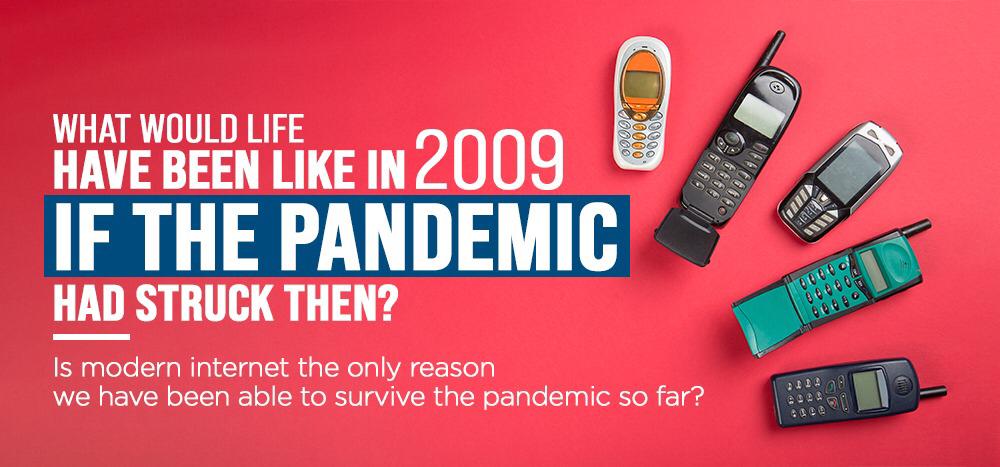We discuss the following topics in this blog:
- The sudden outbreak of a global pandemic.
- How digitisation came to the rescue
- How Would Things Have Been Different 10 years ago
Contents
Sudden Outbreak of a Global Pandemic
The outbreak of COVID-19 brought on a difficult situation of an unprecedented scale for people across the world. We saw how an unknown coronavirus strain quickly escalated into a global pandemic. Yet, it is amazing how well our governments and peoples have been able to rein in the new disease even before its vaccine arrived, by exercising shutdowns and self-quarantines without putting the global economy in jeopardy.
A lot of this happened because of the resilience of people doing the right thing at the appropriate time. That said, it is also worth reflecting on what would have happened had this virus struck us some years ago and whether its timing now has helped ease the burden considerably or not. Because, if COVID-19 had struck us 10 years ago, our global response would have been much less capable in the absence of the digital technologies that have become part of our lives now.
How Digitisation Saved the Day?
It is true that healthcare systems and supply chains of essential commodities continue to operate, and there have been no large-scale bankruptcies as anticipated, that could make the contagion’s effects spin out of control. From the standpoint of education, it is fair to say that the new digital technologies have ensured continuity in learning and education with many having transitioned fairly easily to online mode. While it is true that the digital divide has left many out of the ambit of online learning, it only highlights the growing importance of digitisation in learning.
Till a few years ago, the penetration of digital payments and online groceries orders were negligible. But, most people in quarantine have been able to buy food without major problems. Even when it comes to remaining sane and entertained at home, OTT platforms like Netflix and Amazon Prime Video besides Apple Arcade, Google Stadia, VR headsets are new forms of home entertainment. Zoom meetings allow for happy virtual gatherings with family and friends on regular basis, something that might not have even happened before the pandemic struck.
All this has been made possible by the widening access to high-speed fibre broadband which was out of reach of the majority of the population till a decade ago. In the face of a pandemic such as this, companies that largely relied on internally connected systems would have been thrown out of gear; working from home would have severely restricted the completion of daily office tasks. Overall, this would have caused serious harm to the economy, recovering from which could take almost another decade.
Lessons Learned
Governments, peoples and businesses across the world today are making a better job of responding to the pandemic because they have the power of technology at service. Technology and digitisation have allowed for almost real-time tracking of infections, with information and updates being shared promptly through various social media.
Some states and individuals have suspected the intent and capability of digital technology, with legitimate concerns about surveillance and privacy. Nevertheless, it is an undeniable fact that such technologies have played a vital part in the global response to the pandemic. We may, therefore, emerge from this crisis with a better appreciation for digital tools and technology to build a robust global network, which can be extremely useful – and even life-saving – if used wisely.
The novel coronavirus outbreak in yesteryear that wreaked havoc globally by claiming lives, livelihood and disrupting traditional commerce practices, certainly paved the way for digital applications to almost everything – a sustainable fool-proof business carrier in the long run. But, imagine that it wasn’t 2019 and that you only discovered about the rapidly spreading contagion by paging through your daily newspapers and learnt about the pandemic outbreak of ‘COVID-09’?
How Would Things Have Been Different?
At that time, let alone the demand for online products, even the suppliers were still in a nascent stage of testing prudence of connecting the world through technology. To give an overview of the same, GPS was just made available to be accessed on mobile phones and Twitter was just setting the #Trend of microblogging and onboarding users. Verizon was bullish about its Droid to garner the smartphone title while pitting against iPhone and BlackBerry. And also, that Social Media in itself had to do with reaching out to people virtually, but not knowing what to do further. And, not to forget, companies were sceptical of burning money in the name of intangible technological development following the reeling effects of The Great Recession.
With the onset of the pandemic back then, working remotely as seamlessly would have remained out of question, for video conferencing costed a mammoth and was only possible through investment in professional equipment. ‘Edtech’ was about digitising physical classrooms instead of turning homes into remote classrooms. Pharma solutions weren’t delivery-available through apps and so wasn’t food.
And yet again, to have real-time updates on the areas affected by the fast-spreading contagion, we would have remained glued before the TV screens watching news channels traditionally. Or the most the curious self could have gotten up to was ‘Google’ about the latest happening.
As the world was finding grounds to get connected more and more and paving ways to make it seamless, the last decade has seen an uptick in the infrastructural development to keep the virtually connected world uninterrupted.
Where We Stand Now?
While everybody was a newbie to technology back then, the potential that a robust global networking system was immense. This put into traction most technology infrastructure providing companies to tap the slow yet steady demand from tech companies. The world network equipment industry was set to exceed US$184 billion in 2015, according to research from MarketLine, representing a near 34% increase compared to 2010. Switches and routers representing the leading market segment generated close to 45% of the overall market value.
Year-on-year, the internet penetrating the remotest regions marked the rise in demand for online-driven products and services. Twitter with time became the go-to app for real-time updates on current happenings, while Zoom has kept helping us connect with persons from the world over. Ushering the rise of food tech, real-time data available with data centres have helped foodservice aggregators to bridge the gap between food businesses and patrons in remote locations on the back of robust network infrastructure in place.
To think of being caught in the pandemic blues as early as 2009 might be chaotic, yet, just how we adapted to newer ways to avert the risk of transmission now on the back of robust technology, development in this direction might have escalated in a certain way if not as wholesome back then too.













